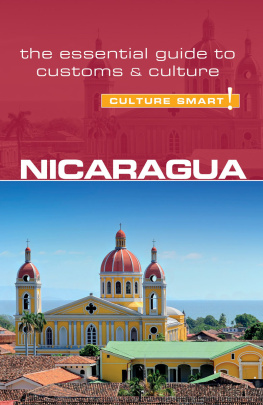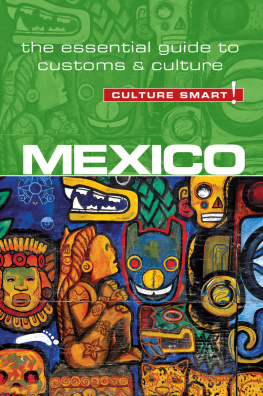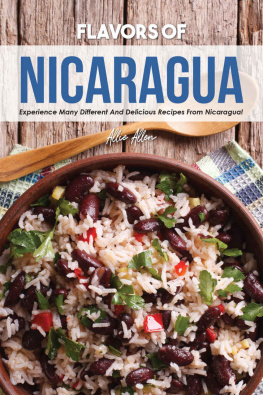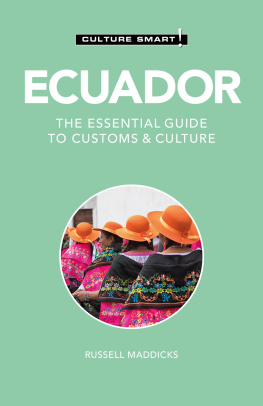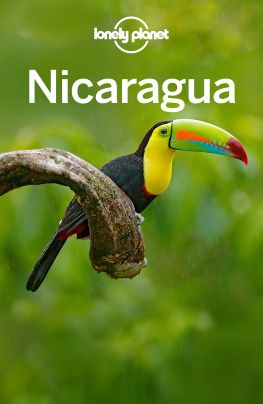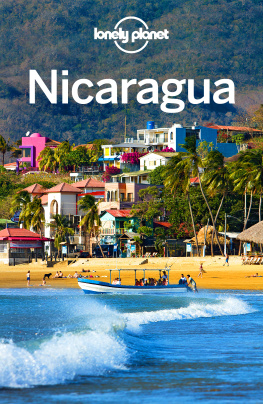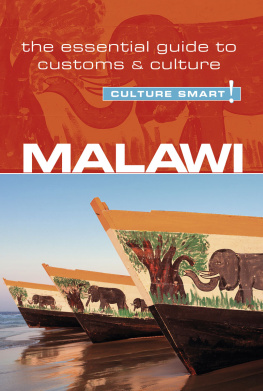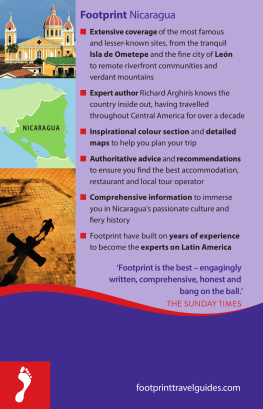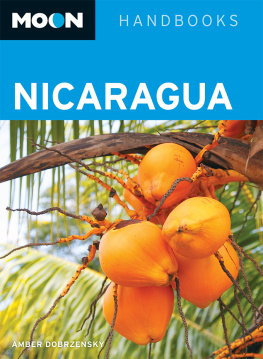
This book is available for special discounts for bulk purchases for sales promotions or premiums. Special editions, including personalized covers, excerpts of existing books, and corporate imprints, can be created in large quantities for special needs.
For more information contact Kuperard publishers at the address below.
ISBN 978 1 85733 876 8
British Library Cataloguing in Publication Data
A CIP catalogue entry for this book is available from the British Library
First published in Great Britain
by Kuperard, an imprint of Bravo Ltd
59 Hutton Grove, London N12 8DS
Tel: +44 (0) 20 8446 2440 Fax: +44 (0) 20 8446 2441
www.culturesmart.co.uk
Inquiries:
Series Editor Geoffrey Chesler
Design Bobby Birchall
Printed in Malaysia
Cover image: Cathedral of Granada, Nicaragua Shutterstock.
Images on the following pages reproduced under Creative Commons Attribution-Share Alike 4.0 International license: KevinEduAIG.
Reproduced under Creative Commons Attribution-Share Alike 3.0 Unported license: Vrysxy.
Creative Commons Attribution-Share Alike 2.0 Generic license: Dennis Tang; 264 Katja Schulz from Washington, D.C., USA.
Images on pages Shutterstock.
About the Author
RUSSELL MADDICKS is a BBC-trained journalist who has spent the last twenty years exploring the countries of Latin America and publishing his experiences in print, online, and in social media. A graduate in Economic and Social History from the University of Hull, England, he is fluent in Spanish and has worked as a regional specialist for BBC Monitoring covering political developments and regional news. Over the years he has visited Nicaragua on many extended trips. He has written for international publications, including BBC Travel, National Geographic Traveller, the Mexico News Daily, Latino Life, ArtNews, and Songlines, and is an accomplished public speaker who has given illustrated talks on Latin American destinations at book fairs, travel shows, colleges, and universities. Russell is the author of Culture Smart! Venezuela, Culture Smart! Ecuador (which won the Gold Prize at the Pearl of the Pacific International Travel Journalism Awards at FITE in 2015), Culture Smart! Cuba (co-author), Culture Smart! Mexico, and the Bradt Guide to Venezuela.
The Culture Smart! series is continuing to expand. All Culture Smart! guides are available as e-books, and many as audio books.
For the latest titles visit
www.culturesmart.co.uk
The publishers would like to thank CultureSmart!Consulting for its help in researching and developing the concept for this series.
CultureSmart!Consulting creates tailor-made seminars and consultancy programs to meet a wide range of corporate, public-sector, and individual needs. Whether delivering courses on multicultural team building in the USA, preparing Chinese engineers for a posting in Europe, training call-center staff in India, or raising the awareness of police forces to the needs of diverse ethnic communities, it provides essential, practical, and powerful skills worldwide to an increasingly international workforce.
For details, visit www.culturesmartconsulting.com
CultureSmart!Consulting and CultureSmart! guides have both contributed to and featured regularly in the weekly travel program Fast Track on BBC World TV.
contents
Map of Nicaragua

introduction
The largest country in Central America, Nicaragua is also one of the most diverse. A chain of hills and thick forests separates the land into two distinct areas: the surfing beaches and colonial cities of the Pacific lowlands that rise up into the northern coffee hills, inhabited by Spanish-speaking mestizos; and the sparsely populated Atlantic coast, which is home to Creole-speaking Afro-Caribbeans and the indigenous Miskito people who gave their name to the famed Mosquito Coast.
Nicaragua is the poorest country in the Western Hemisphere after Haiti, but Nicas, as the people are known, are proud and resilient, forged from the adversity of the countrys troubled past and working hard to secure a better future. The small-town friendliness of the countryside extends to the cities, and the welcoming smiles that visitors encounter are genuine, rather than prompted by the allure of the tourist dollar.
Following the Sandinista uprising that toppled the dictator Anastasio Somoza in 1979, and the ensuing Contra War sponsored by Washington in the 1980s, the image has persisted of a country racked by conflict. There are still challenges that Nicaraguans need to work out, as the widespread protests in 2018 against the social security reforms of the Sandinista government of Daniel Ortega have proved, but travelers will find that Nicaragua is actually one of the safest countries in the Americas, and is free of the gang violence that plagues its northern neighbors.
As travelers discover the delights of this land of lakes and volcanoes, more areas are opening up to tourism, creating a market for Nicaraguas premium coffee beans, tasty chocolate made from heirloom cocoa beans, and Flor de Caa, the smoothest aged rum ever to come out of an oak barrel. Your budget will stretch further here than in other Latin American destinations, and there is a Wow! factor to experience around every corner, including charming colonial cities and graceful mansions, Pacific breakers producing perfect surf, high-altitude coffee plantations shrouded in clouds, world-class birdwatching in rainforest reserves, and picture-postcard Caribbean islands. There is also a chain of volcanoes along the Pacific coast that you can climb up and surf down, and volcanic crater lakes that you can swim in. You can even drive up to the lip of the Masaya volcano, just outside Managua, and stare down at the glowing red lava lake at its heart.
This small book provides readers with an insiders view of the country and its people. It explores Nicaraguas national traditions, turbulent history, tasty local dishes, fun fiestas, and unique cultural expressions. It arms you with key phrases in Nica-speak, or Nicaol, so you can break the ice when interacting with the locals, and provides insights into what the people of Nicaragua are like at home, at play, and in business, so that you really can get under the skin of this intriguing country, and make the most of your visit.
Key Facts
Offical Name | Repblica de Nicaragua |
Population | 6.08 million (2014, World Bank) |
Ethnic Makeup | 69% Mestizo (Mixed Race); 17% White; 9% Afro-Caribbean; 5% Indigenous Amerindian (2010 census) |
Capital City | Managua | Pop. 1.1 million (2015 est.) |
Main Cities | Len (pop. 201,000); Masaya (166,000); Matagalpa (150,000); Chinandega (134,000); Granada (124,000); Jinotega (123,000); Estel (122,000) |
Area | 50,336 sq. miles (130,370 sq. km). Largest country in Central America |
Geography |
Next page
